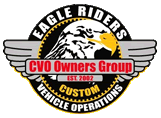You are a thinker and you are also thinking into the future just a bit. NASA is right now in the process of setting up metallurgy experiments....
This laboratory where I work is involved in some of these studies and experiments as well. This lab has an accelerator that is one of the worlds only continuous electron beams - studies of matter down to quarks and their adhesion. The main ongoing research is into the area of "what is holding molecules and their sub parts together" or "what is the glue that is holding matter together"? (as soon as they know, teleportation will become a reality - "beam me up Scotty"). To go a little farther, I'm involved with the fabrication of the niobium cells....
Hoping not to bore you with a lot of detail, we have experimented with a bond of aluminum and different alloys of steel. They act like oil and water an will bond or mix to an extent but there always remains a junction boundary line that will separate when the article is subjected to a temperature change......
Some of the physicists at this lab could use these 'ideas' that folks think about and also would benefit with the 'is possible' attitude that some of us have. Science fiction becomes science fact when scientists forget about what they conceive as impossible.
I guess until there is a better way developed to join iron and aluminum, we will have to depend on some engineers' conception of a well designed 'spiny lock' and strive to prevent the joint from becoming a rattling, slipping and leaking mess.
First of all, thank you very much for indulging me with this. This kind of interaction stimulates, entertains and provokes thought in interested readers. I hope that you enjoy the benefits of this exchange as much as I do.
My interest in this subject is driven by my long awareness of the somewhat fragile nature of the steel or iron union with aluminum. The desire to predict, with some reasonable degree of accuracy, the serviceability of select components relative to their expected life cycle drives my curiosity as well.
As you mentioned earlier, casting iron and steel into aluminum is commonly done; although more common in earlier H-D machinery than it is today. Prior to 1984 the cylinders were iron, but from ’48 through ’83, the Big Twin heads required steel inserts cast in for the head bolts. Early pistons had a steel strut cast into the skirt to control expansion. These were run in many models through 1982; the ’83 Shovel’s ran a Mahle piston which did not utilize the strut. The 4 speed BT transmission case had a single threaded insert cast into it, which was used to secure the right side of the housing to a frame tab. The breather trap in the early crankcases utilized a short pipe cast into the crankcase. Prior to 1990, the left and right main bearings were pressed into steel inserts which were cast into the crankcase, and the list goes on.
The example of the left main bearing insert in the previous post was offered because of its relevance. During the time that these inserts were cast into the crankcase, no union of this type used anywhere in the powertrain was more apt to fail than this one.
The attached photo allows us to take a trip back in time while we wait for the bugs to be completely worked out of the teleportation chamber.

The piston is ’37 to ’48, 74-Sidevalve. The cast in strut was used through 1982 on the Big Twin engines. The cylinder head inserts circa 1950 Panhead. Milwaukee took a very optimistic approach back then by presenting a large footprint flush with the gasket surface. Shovelhead inserts had a much smaller footprint and sometime around the middle ‘70’s Milwaukee finally recessed the inserts below the gasket surface. The left main insert pictured in the two bottom slots, is no longer flush with the crankcase material as it was when the crankcase was originally manufactured. This failure would be considered substantial. The oil passage visible in the lower left photo feeds the left main bearing. Engine oil must pass directly through the steel and aluminum joint at this point.
When the smoke clears at the end of the day, the presence or absence of a metallurgical bond between these specific components isn’t important; the union is what it is; whatever it is;

having said that, I can’t shake this nagging sense of the existence of a bond between the steel or iron and aluminum.
The manufacturing issue mentioned in my previous post is referred to as “die soldering” (google it). There is a great deal of information available on the web regarding this phenomenon. If die soldering occurs between these dissimilar materials when not desired, what prevents this reaction to be used effectively in a controlled environment to strengthen the joining of steel and aluminum?
Thanks again SE08RK.
djkak
 Author
Topic: 110 Cylinder Liner Movement (Read 20919 times)
Author
Topic: 110 Cylinder Liner Movement (Read 20919 times)

